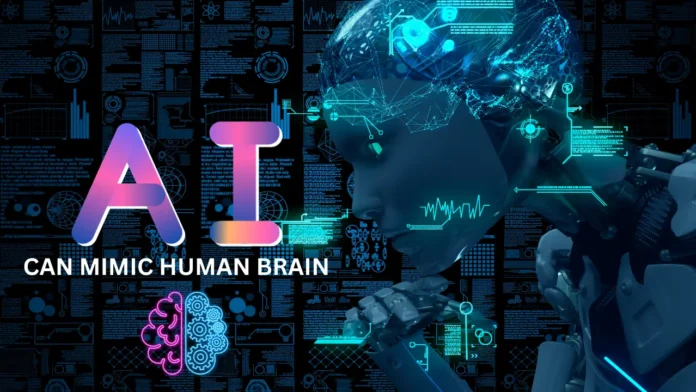Yes, AI can mimic the human brain. Research conducted has led to a breakthrough where an AI system displays a surprising ability to organize and evolve itself to mimic the structure and functionality of the human brain. This results in an advancement toward creating AI systems that closely simulate cognition. The results of this study have generated curiosity and speculation regarding the impact on fields such as neuroscience, artificial intelligence, and cognitive science.
Table of Contents
Overview of AI Systems
The use of AI technology is transforming industries, reshaping our lifestyles and work environments. As we continue to see advancements in AI, it becomes important to take into account the social consequences they could entail when building and implementing these systems.
Understanding the Human Brain
The human brain is truly remarkable both in its structure and in the way it functions. It contains billions of cells called neurons that communicate using chemical signals. These neurons work together to form networks that shape our thoughts, feelings, and actions.
The brain can be divided into different areas. Each has its specific role. For example, the cerebral cortex handles level processes such as language, memory, and decision-making. On the other hand, the cerebellum is responsible for coordination such as controlling our movements.
One of the aspects of the human brain is its ability to reorganize itself. This means that it can adapt and change based on experiences such as learning opportunities or experiencing injury. We call this phenomenon neuroplasticity, which allows our brains to continuously develop throughout life.
The human brain is a dynamic organ that continues to fascinate scientists and researchers due to its structure, diverse functionalities, and incredible capacity for adaptation and reorganization.
How AI Can Mimic Human Brain?
Artificial intelligences that try to mimic brain function include important aspects;
- Neural Network Architecture: Artificial intelligence often uses neural network architecture to mimic the human brain. These architectures are designed to simulate the interconnection of neurons in our brains. By using layers of neurons and the connections between them, AI systems can process and learn from information in the same way as humans.
- Learning and Adaptation: Just as our brains learn from experience and adapt to information, AI systems do the same. Techniques such as learning, unsupervised learning, and reinforcement allow AI models to improve their performance over time by learning from data and adapting their behaviour based on feedback.
- Emulation of Cognitive Processes: Artificial intelligence aims to reproduce processes such as observation, reasoning and decision-making. By combining techniques from science and psychology, AI researchers strive to develop systems that can sense and interpret information, make decisions, and solve problems in ways similar to human thought processes. In general, the goal of brain replication in artificial intelligence is to create systems that have human-like intelligence and adaptability.
Challenges
The challenges of mirroring the human brain in manufactured insights include:
- Complexity: The human brain is fantastically complex, and following its complex structure and usefulness in a simulated insight framework can be a major challenge
- Moral Contemplations: As the insights and frameworks created become more human, questions about their use and ethical considerations for society become increasingly necessary.
- Neuroscientific Understanding: Despite advances, our understanding of the human brain is limited, making it difficult to fully duplicate its patterns in simulated insights.
- Computing Control: Mirroring the vast networks of neurons and their intuitions within the human brain requires enormous computing control, which presents a particular challenge to the progress of simulated insights.
- Unusualness: The human brain and its ability to reorganize itself and exhibit neuroplasticity are integral to something difficult to replicate in a simulated insight framework.
In conclusion, this investigation speaks to remarkable progress in the journey to create AI frameworks that closely simulate human cognition. However, there are still challenges to overcome. The potential benefits for a variety of areas make this an attractive area of interest to think about and improve.


